In a world where negligence, access, and greed drive so many, cruelty thrives. And our oceans have been hit hard. As questions swirl in the minds of the big-hearted, we have to wonder, how many sharks are killed a year?
It’s hard to fathom, but we lose up to 273 million sharks every year. It’s animal genocide. How did we get to this point, and what can we do about it? We’ll answer those questions as we delve into the ugly truths of commercial fisheries, shark fin soup, and ocean pollution.
We must do better. No living thing in our world is useless or unimportant. We all affect each other. Come with me as we explore facts and hard truths. Hopefully, we’ll learn something that turns this thing around.
How Many Sharks Are Killed a Year

Delve into the alarming reality of marine life conservation with an in-depth look at the staggering number of sharks killed each year.
Almost 273 Million Sharks Are Killed Each Year. (IFAW)
These incredible fish can’t keep up their reproduction to make up the difference. Now it’s time to get brutally honest and totally transparent… Fishermen catch a shark, cut off its fins, and throw the shark (which is often still living) back into the ocean. Without its fins, it soon drowns or bleeds to death.
Shark fins have a high commercial value, and shark meat does not. It’s the reason why this practice is so rampant. The global consumption of shark fin soup within various Asian communities fuels the demand for shark fins and encourages the practice of finning sharks.
Commercial Fisheries Result in the Annual Death of Over 100 Million Sharks. (IFAW)

So, what kills the rest? Pollution of all kinds (air and water), global warming, human negligence (like boating), and overfishing. Sharks are killed not only for their fins but also for their meat, liver oil, leather, teeth, and cartilage.
Shark and Ray Numbers Declined by 71% in the Past 50 Years Due to Overfishing. (IUCN)
World experts assessed 31 species. In those 50 years, there was a doubling of fishing pressure and a tripling of sharks killed. Another issue is called fishing bycatch. It’s when the fishing nets catch common fish like tuna and mackerel, inadvertently catch sharks, and discard them.
77% of Oceanic Shark and Ray Species Face Extinction. (IUCN)
What a complete nightmare. These species now qualify as “Threatened” with extinction on the IUCN Red List. There are so many species on the list that I couldn’t scroll through all of them. The IUCN has assessed 536 shark species. From the list, 167 are either: “Vulnerable” (76), “Endangered” (56), or “Critically Endangered” (35).
11,416 Sharks Are Killed Globally Each Hour. (America’s Future)

Between 6.4% and 7.9% of all shark species globally are killed every year, a number that becomes even more startling when broken down by the hour. That’s around three sharks every second. It’s an overwhelming figure, but keep reading to see what actions we can take to save the sharks.
The Forecast Predicts a USD 149.85 Million Growth in the Shark Meat Market Size. (Technavio)
Between 2022 and 2027, it’s estimated that the shark meat market size will grow at a CAGR (Compound Annual Growth Rate) of 2.59%. As technological advancements improve, shark fishing operations get better and better. (Yet worse and worse for the sharks.)
The EU, Averaging 28%, Imports Nearly a Third of the Total (53,407.49 Metric Tons). (IFAW)
By 2020, 45% of all shark fin imports were made by the EU. They have increased their percentage exponentially since 2017. The numbers are forecasted to climb.
Let’s explore the chart showcasing the top five EU member states that play a significant role in shark fin imports: Spain, Portugal, the Netherlands, France, and Italy.
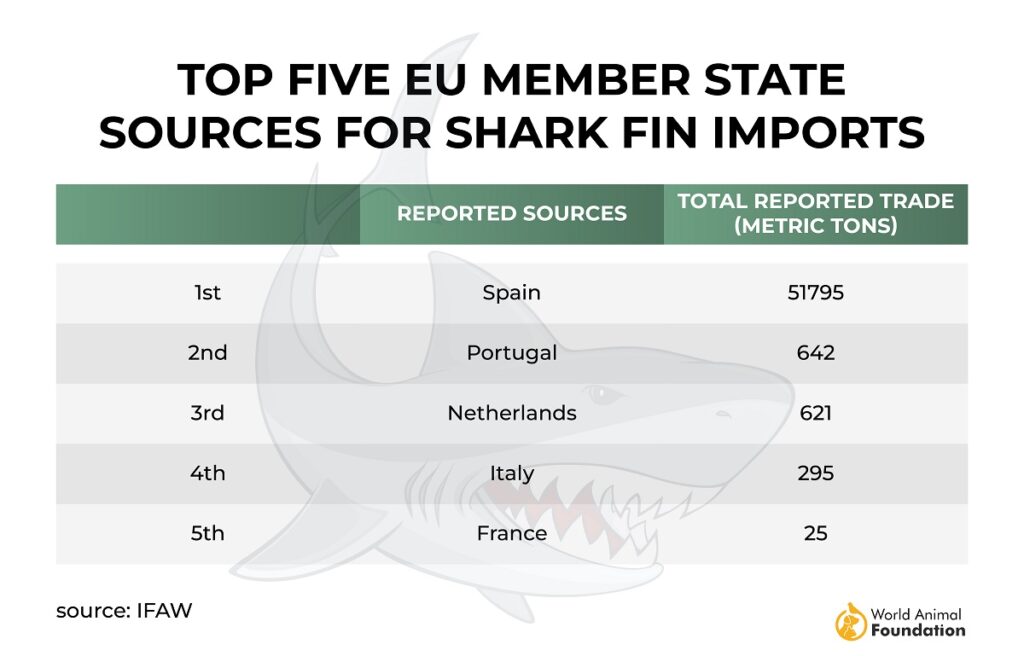
From 2003 to 2020, Spain Imported 51,795 Tonnes of Shark Fin to Hong Kong, Singapore, and Taiwan. (Stop Finning EU)

From EU Member States, Spain is the number one source of all reported imports. (Annual average is 2,877 metric tonnes.) Portugal is second with 642 metric tonnes.
How Many People Do Sharks Kill a Year

Venture into the depths of marine interactions as we explore the annual number of human fatalities attributed to shark encounters.
5 to 6 People Die From Unprovoked Shark Attacks Every Year. (Florida Museum)
This is a worldwide statistic. Experts believe these unprovoked shark attacks are mainly the result of sharks misidentifying people as fish. To put it in perspective, lightning strikes kill 2,000 people worldwide annually.
1,500 Is the Total Number of Cases in the U.S. Since 1837. (Florida Museum)
In 2022, the US had the highest number of unprovoked shark bites worldwide, with 41 confirmed cases. This is 72% of the worldwide total. In 2021, there were 47 such incidents.
Unprovoked Shark Attacks in Australia Are 687. (Florida Museum)
This statistic has been collected over many decades. The territories affected, in order of attacks, were:
- New South Wales
- Queensland
- Western Australia
- South Australia
- Victoria
- Tasmania
- Northern Territory
In 2022, Australia and the US Were on Top With 41 and 9 Unprovoked Attacks, Respectively. (Florida Museum)
Egypt and South Africa were 3rd and 4th, respectively, with 2 and 2. All were fatal. Brazil, New Zealand, and Thailand finish up the list with 1 each. None were fatal.
The Risk of Death From a Shark Attack Stands at 1 in 4,332,817. (Florida Museum)

Trends show that shark attacks, fatal and non-fatal, are decreasing. Worldwide incidents are quite low considering the number of people involved in water activities. Fatality rates have been decreasing for decades, mostly due to advances in medical treatments, beach safety, and public awareness.
Shark Fin Soup
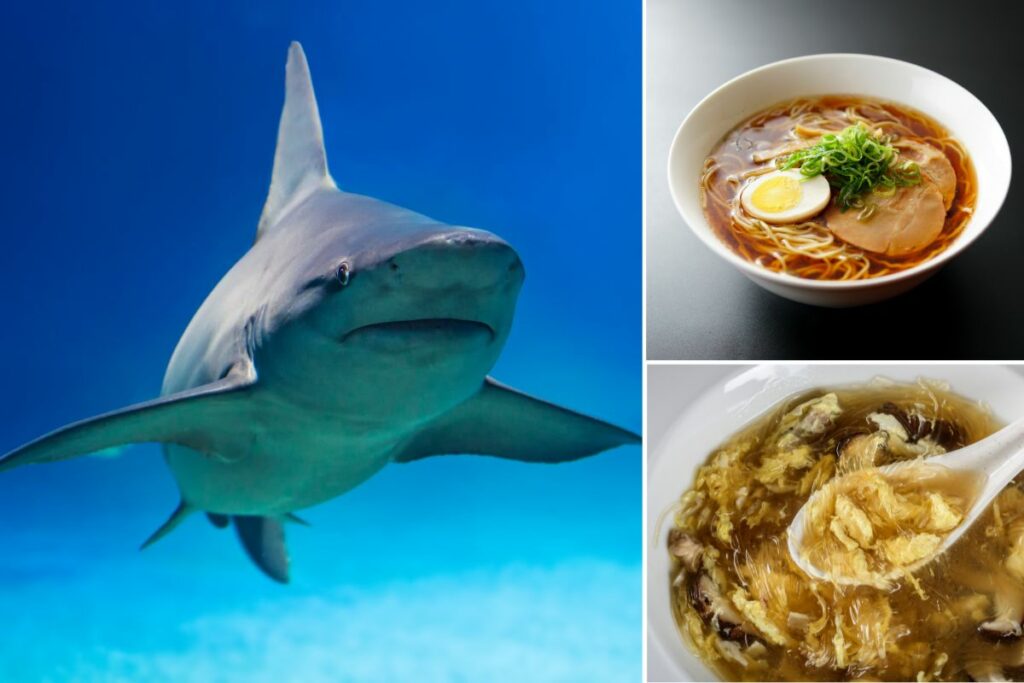
Dive into the controversial delicacy of shark fin soup, a key factor behind the yearly slaughter of countless sharks worldwide.
73 Million Sharks Are Killed Annually for Fin Soup. (AWI)
Is it that tasty? The ends certainly don’t justify the means. The demand for dumplings, shark fin soup, and other similar dishes perpetuates the act of shark finning.
1.3 To 2.7 Million Hammerhead and Smoothhead Sharks Are Killed for the Fin Trade. (Ocean.si)
This is a yearly stat, not counting all the other species there are. In 2015, the northwestern Atlantic population of the scalloped hammerhead declined from 155,500 in 1981 to 26,500 in 2005. Shark fisheries have decreased shark populations by some 60%-70%.
Sharks Are Being Killed in Asia and Europe for Shark Fin Soup. (NCBI)
One demographic with a high demand for shark fin is in many Asian communities worldwide. It would be in the shark’s favor if you could identify the species of shark that a fin came from; however, that isn’t possible visually.
There was a study done by the National Library of Medicine to identify those species of sharks from soup in Singapore. They found several endangered species that have been shown to have high levels of mercury (neurotoxin), making it a poor choice for human beings.
In 2021, the Senate Banned the US Shark Fin Trade. (US.Oceana)
June 8, 2021 – The U.S. Senate passed the Shark Fin Sales Elimination Act which is a bill that would ban the buying and selling of shark fins in the United States. This is a powerful stand of a First-world country taking responsibility to remove itself from the shark decimation trade.
China’s Shark Fin Consumption Dropped 80% From 2011 to 2018. (National Geographic)
This is largely due to national bans that make it illegal to serve shark fin at government banquets. Also, celebrity Yao Ming’s awareness campaigns have gained traction in the area.
Note: Four hundred dollars is the going rate for a pound of dried shark fin, while shark fin soup can cost anywhere from $50-$200.
Shark Facts
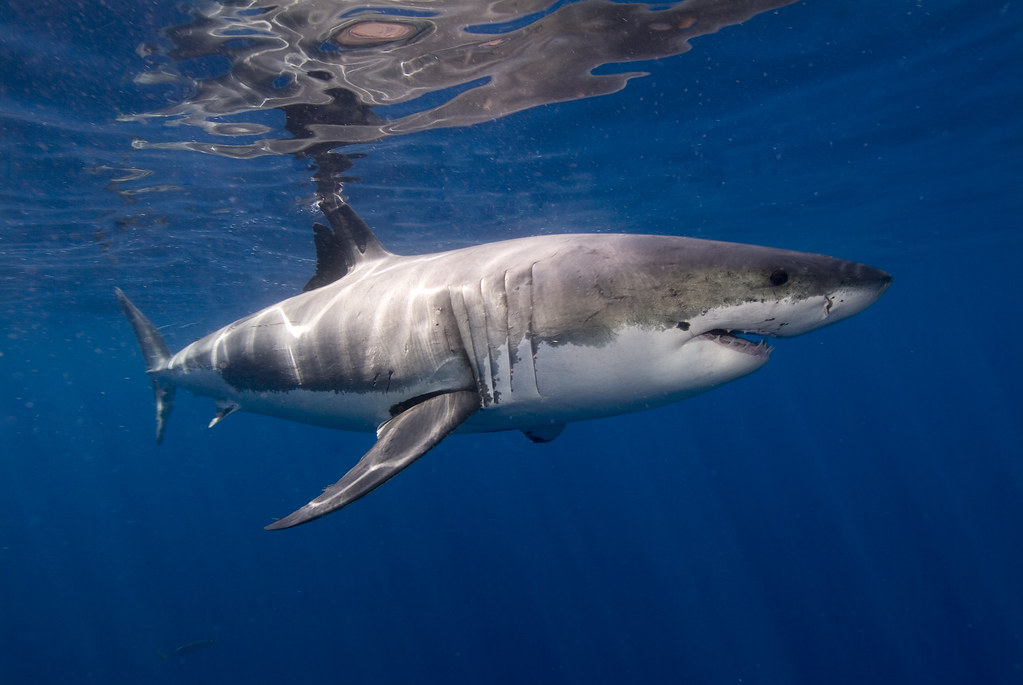
Embark on a journey through the ocean’s depths as we unveil fascinating shark facts, from their ancient origins to their modern-day mystique.
Sharks Belong to the Elasmobranch Fish Family. (FAO)
Rays are a subclass of sharks, and both are a group of about 1100 species of mostly marine fishes. Sharks grow slowly and mature later compared to bony fishes, which results in low rates of increase. Most shark and ray populations aren’t able to withstand overfishing without completely being depleted.
There Are 500 Species of Sharks. (IFAW)
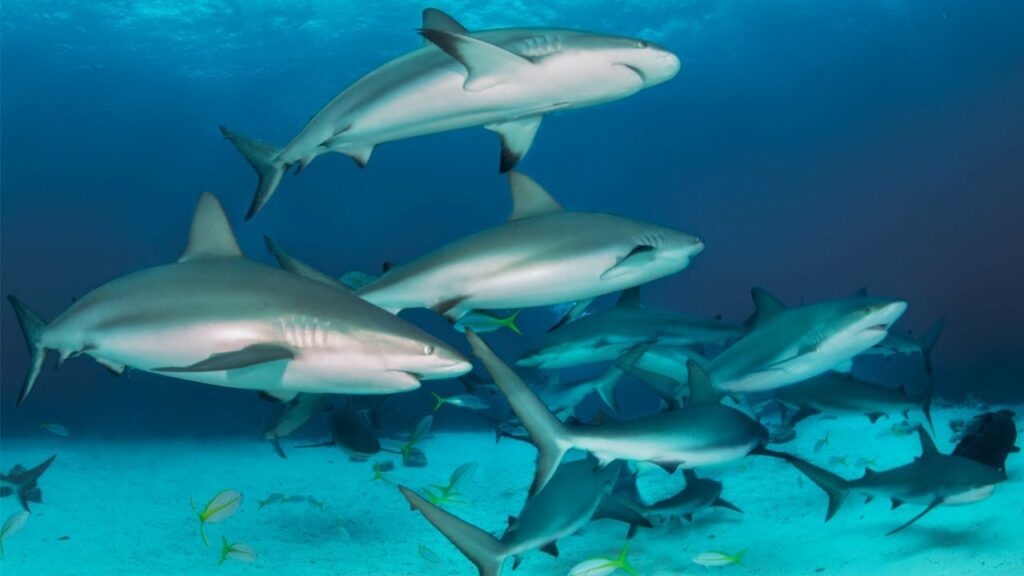
Each species has unique behaviors and characteristics. There’s an extremely delicate balance in ecosystems, and humans (shark fisheries) are “rocking the boat” with their greed while so many of us sit and watch. It will take many decades to get back what we’ve lost, if we can save them at all.
The Scientific Name of the Shark Is Elasmobranchii. (IFAW)
Break that down into each species of sharks and rays – They each have their own scientific name. The shark classification is Chondrichthyes. This identifies them as being made of cartilage (internal skeleton) instead of bone.
Sharks Are Vital for Ocean Health. (One Earth)

Sharks are critical to our ocean’s ecosystems. It’s all a domino effect. They help regulate populations of other predatory fish, like groupers, who would otherwise increase their populations to the ocean’s coral reefs and seagrass detriment. Predators would feed on herbivores who feed on macroalgae.
With fewer herbivores, macroalgae would be in abundance and overtake the coral of the reef system. Many sharks are top predators, and their loss comes as a direct hit to everything else in the ocean. And ocean health means environmental health, which means human health. Sharks play a part in keeping us alive.
Sharks Contribute Essential Nutrients to the Water. (IFAW)
And let’s go a step further. Sharks help combat global warming. Here’s how it works: Seagrasses hold essential blue carbon in oceans. They form dense underwater fields that suck carbon dioxide (greenhouse gas) out of the atmosphere.
Sharks eat sea turtles, and when shark populations decrease, the turtles deplete the seagrasses, which sends their blue carbon stores into the atmosphere and contributes to global warming.
Also, sharks consist of 10%-15% carbon. If they die naturally, they sink to the bottom of the ocean and become deep-sea carbon reservoirs. What overfishing does is release the ocean’s carbon into the atmosphere where it doesn’t need to be.
How to Save Sharks?
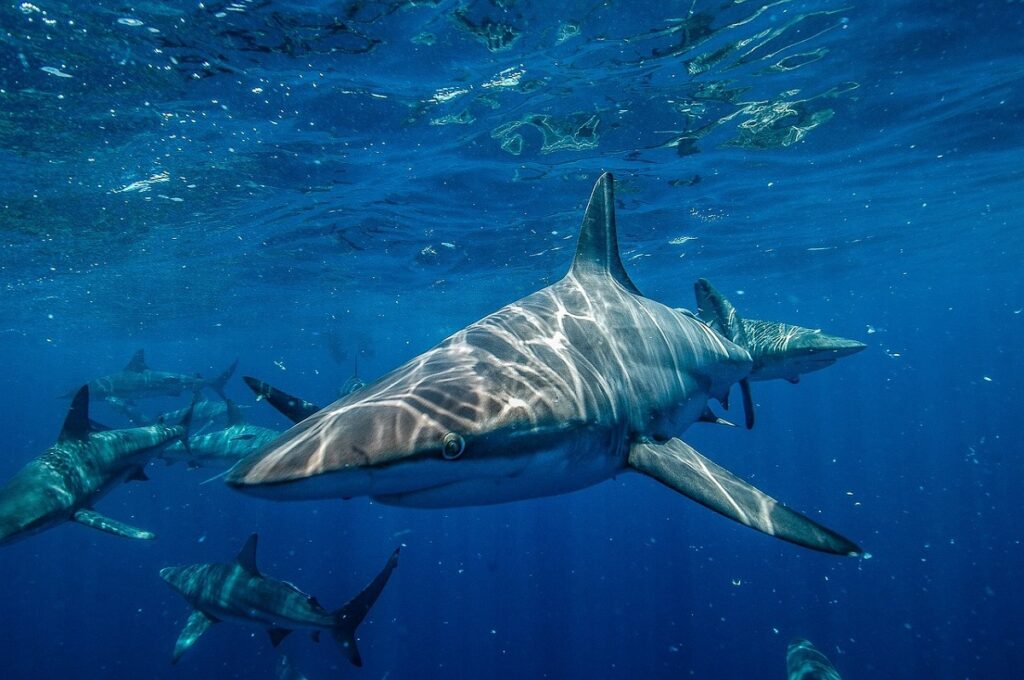
1. Reduce, Reuse, Recycle
Plastic is killing our oceans, which kills our sharks and no one really knows how many sharks plastic directly kills, but it’s a significant number. This is an important step in shark conservation.
2. Join Shark Conservation Organizations.
There are some wonderful people out there who are fighting for the lives of sharks. Google “Shark conservation organizations” and either donate, volunteer your time, or even adopt a shark! (Examples: Shark Conservation Fund, International Fund for Animal Welfare – IFAW, Shark Trust)
3. Don’t Purchase Shark Products. Things Like:
- Squalene/squalene (shark liver oil)
- Chondroitin (shark cartilage)
- Shark jewelry (shark teeth)
- Shagreen (shark leather)
- Fishmeal that contains sharks
4. Reduce Your Carbon Footprint.
By now, all of us need to know ways to do this, but if not, check out Panda.org (WWF). Doing this not only helps reduce global warming and climate change but also saves the oceans, which saves the sharks.
5. Enlist the Government’s Help.
Let your governmental representative know (by email, phone call, or letter) that shark conservation is important to you. Ask them to support conservation legislation.
6. Educate Yourself.
Google is a beautiful thing. Read about sharks and the benefits they give to us. If we’re going to be in their corner, we need to know what we’re fighting for.
These are ways we can all get involved. It’s good to know we don’t need to move mountains to make a difference.
FAQs
How Many Sharks Are Killed for Shark Fin Soup?
Approximately 73 million sharks are killed annually worldwide just for their fins.
Why Do People Kill Sharks?
For their:
- Fins
- Meat
- Liver oil
- Leather
- Meat
- Cartilage
What Is Shark Fin Soup?
Shark fin soup, or stew, is made with fins obtained from a variety of shark species. The taste itself comes from other soup ingredients. The shark fin only provides texture.
How Many Sharks Are Killed Each Year in China?
Millions per year. No one knows the exact number, but China is the primary area where shark fins and shark fin soup are consumed.
Final Thoughts
I wish I didn’t need to say it’s only a matter of time until there are no more sharks, but that could be the case if all of us don’t take responsibility for our fellow beings. It’s sad we even need to talk about sharks killing people in the same article as people killing sharks except to report the massive difference between the two numbers.
I started this article by mentioning that greed is rampant and that I would be remiss if I didn’t mention that shark fin soup is often served at weddings to signify prosperity. But none of us will prosper if our sharks become extinct.
So join us as we try to take even one small step and do our part to stop this travesty. Join us as we stand up for the creatures who cannot stand up for themselves. It’s one thing to not know our current situation with the shark decline. It’s another to know and not do anything. Let’s do this!


